September 22, 2017 | Smart Manufacturing
Don’t Get Left Behind, SMART Manufacturing is the Future for Small and Medium-Sized Manufacturers
What exactly is Smart Manufacturing?
Over the past several years, the topic of SMART Manufacturing has been a conversation among industry experts, strategists and thought leaders. However, despite its media coverage, many on the front lines of manufacturing aren’t quite sure what SMART Manufacturing entails or why it’s even relevant to their organization.
To state it simply, it is the use of real-time data and technology when, where and in the forms that are needed by people and machines. But, if you are looking for more comprehensive definitions, there are two from leading organizations. According to the National Institute of Standards and Technology (NIST), SMART systems are “fully-integrated, collaborative manufacturing systems that respond in real time to meet changing demands and conditions in the factory, in the supply network, and in customer needs.”
The Smart Manufacturing Leadership Coalition (SMLC) defines SMART as “the ability to solve existing and future problems via an open infrastructure that allows solutions to be implemented at the speed of business while creating advantaged value.”
The concept and successful implementation of SMART Manufacturing is being predicted to be the Fourth Industrial Revolution. And with many other advances in recent years, it all has to do with technology connectivity and the unprecedented access to, and contextualization of, data.
Manufacturing is evolving and your business needs to evolve too. The Fourth Industrial Revolution has arrived as manufacturers meld new technologies such as the Internet of Things (IoT), robotics, virtual reality (VR) and artificial intelligence (AI) into their business strategies. SMART Manufacturing – Sense, Measure, Analyze, Report and Train – will be an integral component of this strategy.
The McKinsey Global Institute in its report, “The Internet of Things: Mapping the Value Beyond the Hype,” stated that SMART Manufacturing will generate a total economic impact of $3.9 trillion to $11.1 trillion a year by 2025. The report states that factories are expected to have the greatest potential impact on SMART Manufacturing -- as much as $3.7 trillion per year. By not moving forward, you may be leaving your business behind.
Fortunately, you don’t need to be a big company to realize the benefits of moving to a SMART Manufacturing process. However, in order to be effective, people, processes and technology need to be in balance and working together. Other key components of a SMART Manufacturing solution include:
- Equipment and Connectivity
- Data Collection
- Information Management & Visualization
- Data Analysis and Intelligence
- Business Decision Making
- Workflow execution
The brain of a smart manufacturing system is manufacturing data. This provides markers to determine the health of the business. This data can then be then used to provide a series of analytic procedures, including:
- Descriptive: Used to capture a product’s condition, environment and operation
- Diagnostic: Examines the cause of reduced product performance or failure
- Predictive: Detects patterns that signal impending events
- Prescriptive: Identify measures to improve outcomes or correct problems
What Does SMART Mean for the Manufacturer?
If you’re a small manufacturing organization, what are your strategies for improving upon your processes? What do you want to accomplish – increase sales, reduce costs, improve efficiency, or have a more agile supply chain? It’s likely that you’ve purchased hardware or software along with a license to use the technology to help you accomplish one or more of your goals. It also offers the ability to collaborate with suppliers, both upstream and downstream, more effectively.
Infrastructure Changes: The What, Where & Why
A common misconception about SMART Manufacturing is that it will require organizations to drastically transform their current operations and invest in advanced technology that will be too complex to adjust to. While some change is necessary, of course, SMART greatly simplifies this transition by building to the capabilities that manufacturers have currently.
One of the key concepts involved is recognizing the value of data as a key asset to be developed and managed. Put another way, for a system that analyzes data, the key asset is not the analytics system itself but the data itself. It’s the data used to build and validate the analysis and the data that are generated. Such an emphasis on data causes us to think differently about where to focus resources.
For any operational objective, there needs to be a source of relevant data. The sources of data can be as basic as a fax machine, tablet or smart phone -- or as sophisticated as a wide area sensor network. The point is, data is valuable in the context of the operational objective, not the sophistication of the sensors. There are many highly beneficial applications that can draw upon data.
Infrastructure changes needed to accommodate the applications that use and act on the data happen within the SMART platform — giving manufacturers the convenience of making less drastic changes within their facilities. SMART Manufacturing will lead to significant changes in business opportunities and operations over time.
Conclusion: The Biggest Change is in People —not Technology
A major part in seeing success early has to do with the company culture and the commitment of team members. It’s important to remember that all the integration and use of technology is rendered useless if it is combined with employees who don’t fully understand how it will make their job easier, not harder.
And just as crucial as employee support is needed for a successful SMART path, it can also serve as the biggest hurdle in implementation.



Leave a Comment